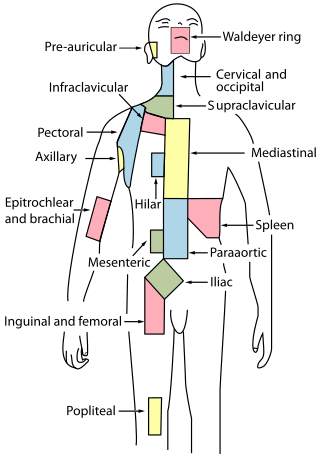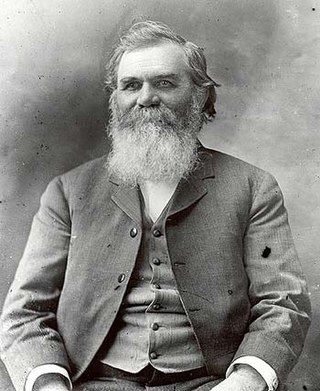
Chiropractic is a form of alternative medicine concerned with the diagnosis, treatment and prevention of mechanical disorders of the musculoskeletal system, especially of the spine. It has esoteric origins and is based on several pseudoscientific ideas.

In chiropractic, a vertebral subluxation means pressure on nerves, abnormal functions creating a lesion in some portion of the body, either in its action or makeup. Chiropractors claim subluxations are not necessarily visible on X-rays.
Manual therapy, or manipulative therapy, is a part of Physiotherapy, it is a physical treatment primarily used by physical therapists, occupational therapists to treat musculoskeletal pain and disability; it mostly includes kneading and manipulation of muscles, joint mobilization and joint manipulation. It is also used by Rolfers, massage therapists, athletic trainers, osteopaths, and physicians.

The vertebral arteries are major arteries of the neck. Typically, the vertebral arteries originate from the subclavian arteries. Each vessel courses superiorly along each side of the neck, merging within the skull to form the single, midline basilar artery. As the supplying component of the vertebrobasilar vascular system, the vertebral arteries supply blood to the upper spinal cord, brainstem, cerebellum, and posterior part of brain.

Spinal adjustment and chiropractic adjustment are terms used by chiropractors to describe their approaches to spinal manipulation, as well as some osteopaths, who use the term adjustment. Despite anecdotal success, there is no scientific evidence that spinal adjustment is effective against disease.

Spinal manipulation is an intervention performed on synovial joints of the spine, including the z-joints, the atlanto-occipital, atlanto-axial, lumbosacral, sacroiliac, costotransverse and costovertebral joints. It is typically applied with therapeutic intent, most commonly for the treatment of low back pain.

Carotid artery dissection is a separation of the layers of the artery wall in the carotid arteries supplying oxygen-bearing blood to the head. It is the most common cause of stroke in younger adults. The term 'cervical artery dissection' should also be considered in the context of this article.

Vertebral artery dissection (VAD) is a flap-like tear of the inner lining of the vertebral artery, which is located in the neck and supplies blood to the brain. After the tear, blood enters the arterial wall and forms a blood clot, thickening the artery wall and often impeding blood flow. The symptoms of vertebral artery dissection include head and neck pain and intermittent or permanent stroke symptoms such as difficulty speaking, impaired coordination, and visual loss. It is usually diagnosed with a contrast-enhanced CT or MRI scan.

Cervical lymph nodes are lymph nodes found in the neck. Of the 800 lymph nodes in the human body, 300 are in the neck. Cervical lymph nodes are subject to a number of different pathological conditions including tumours, infection and inflammation.

The history of chiropractic began in 1895 when Daniel David Palmer of Iowa performed the first chiropractic adjustment on a partially deaf janitor, Harvey Lillard. While Lillard was working without his shirt on in Palmer's office, Lillard bent over to empty the trash can. Palmer noticed that Lillard had a vertebra out of position. He asked Lillard what happened, and Lillard replied, "I moved the wrong way, and I heard a 'pop' in my back, and that's when I lost my hearing." Palmer, who was also involved in many other natural healing philosophies, had Lillard lie face down on the floor and proceeded with the adjustment. The next day, Lillard told Palmer, "I can hear that rackets on the streets." This experience led Palmer to open a school of chiropractic two years later. Rev. Samuel H. Weed coined the word "chiropractic" by combining the Greek words cheiro (hand) and praktikos.
Joint manipulation is a type of passive movement of a skeletal joint. It is usually aimed at one or more 'target' synovial joints with the aim of achieving a therapeutic effect.
Manipulation under anesthesia (MUA) or fibrosis release procedures is a multidisciplinary, chronic pain-related manual therapy modality which is used for the purpose of improving articular and soft tissue movement. This is accomplished by way of a combination of controlled joint mobilization/manipulation and myofascial release techniques. MUA is used by osteopathic/orthopedic physicians, chiropractors and specially trained physicians. It aims to break up adhesions on or around spinal joints or extremity joints to which a restricted range of motion can be painful and limit function. Failed attempts at other standard conservative treatment methods, over a sufficient time-frame, is one of the principal patient qualifiers.

Cervical artery dissection is dissection of one of the layers that compose the carotid and vertebral artery in the neck (cervix). They include:
Chiropractors use their version of spinal manipulation as their primary treatment method, with non-chiropractic use of spinal manipulation gaining more study and attention in mainstream medicine in the 1980s. There is no evidence that chiropractic spinal adjustments are effective for any medical condition, with the possible exception of treatment for lower back pain. The safety of manipulation, particularly on the cervical spine has been debated. Adverse results, including strokes and deaths, are rare.
NUCCA is an acronym for the National Upper Cervical Chiropractic Association. It was founded in 1966 by chiropractor Ralph Gregory and based primarily upon the work he and John Grostic had performed before Grostic's death in 1964. The new style of upper cervical adjusting technique was taught in 1966 at the first NUCCA seminar, which was held at the Howard Johnson Motel in Monroe, Michigan.
Throughout its history, chiropractic has been the subject of internal and external controversy and criticism. According to magnetic healer Daniel D. Palmer, the founder of chiropractic, "vertebral subluxation" was the sole cause of all diseases and manipulation was the cure for all disease. A 2003 profession-wide survey found "most chiropractors still hold views of Innate Intelligence and of the cause and cure of disease consistent with those of the Palmers". A critical evaluation stated "Chiropractic is rooted in mystical concepts. This led to an internal conflict within the chiropractic profession, which continues today." Chiropractors, including D.D. Palmer, were jailed for practicing medicine without a license. D.D. Palmer considered establishing chiropractic as a religion to resolve this problem. For most of its existence, chiropractic has battled with mainstream medicine, sustained by antiscientific and pseudoscientific ideas such as vertebral subluxation.

Veterinary chiropractic, also known as animal chiropractic, is chiropractic for animals – a type of spinal manipulation. Veterinary chiropractors typically treat horses, racing greyhounds, and pets. Veterinary chiropractic is a controversial method due to a lack of evidence as to the efficacy of chiropractic methods. Contrary to traditional medicine, chiropractic therapies are alternative medicine. There is some degree of risk associated with even skilled manipulation in animals as the potential for injury exists with any technique used. The founder of chiropractic, Daniel David Palmer, used the method on animals, partly to challenge claims that the placebo effect was responsible for favorable results in humans. Chiropractic treatment of large animals dates back to the early 1900s. As of 2019, many states in the US provide statutory or regulatory guidelines for the practice of chiropractic and related treatments on animals, generally requiring some form of veterinary involvement.
Osteomyology is a multi-disciplined form of alternative medicine found almost exclusively in the United Kingdom and is loosely based on aggregated ideas from other manipulation therapies, principally chiropractic and osteopathy. It is a results-based physical therapy tailored specifically to the needs of the individual patient. Osteomyologists have been trained in osteopathy and chiropractic, but do not require to be regulated by the General Osteopathic Council (GOsC) or the General Chiropractic Council (GCC).

Daniel David Palmer was the founder of chiropractic. Palmer was born in Pickering Township, Canada West, but emigrated to the United States in 1865. He was also an avid proponent of pseudoscientific alternative medicine such as magnetic healing. Palmer opposed anything he thought to be associated with mainstream medicine such as vaccination.
Primary spine practitioners are health care professionals who are specially trained to provide primary care for patients with spinal disease.







